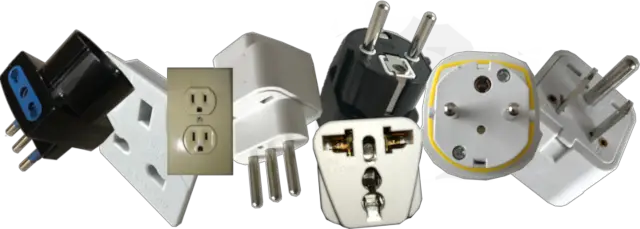Plugs & Travel Adapters for your next trip to Europe
Laura Bure - August 10, 2017
 Breathtaking Trevi Fountain in Rome
Breathtaking Trevi Fountain in Rome
Have you booked a trip to Europe? Wondering how will you charge your laptop and mobile, dry your hair, charge the batteries and iron your clothes? On the surface, Europe seems easy but there are a few things you should know before you travel ...
The Good
The European Community has standardised the electrical power plugs across the continent, this means you will need to be prepared for only one plug... well.. maybe... It is a bit more complicated, given all the different countries, tradition and history... You will find a bit of variety in the continent. I will simplify this for you.
Outlets and plugs are of type C and F across most of Europe i.e. Spain or Austria.
| Plug C | Outlet C | Plug F | Outlet F |
|---|---|---|---|
 |
 |
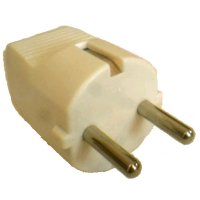 |
 |
The good news is they are interoperable; this means you can almost sure plug a plug C into an outlet F and vice-versa.
On top, another good news, the voltage across all European countries is 220V so no need to worry about voltages, but take into consideration your home network voltage.
If your country uses 110V as standard, you want to read the section regarding to 110V.
The Bad
| Plug E | Outlet E |
|---|---|
 |
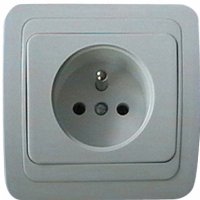 |
France, Belgium, Slovakia, Canary Islands, Czech Republic, Greece and Monaco uses type E, which is very similar to the rest of the continent and they are nearly interchangeable.
The problem: they have an earth ping projecting from the socket stopping you from inserting a typical plug F (sometimes C too). Why? The ping physically gets in the middle stopping you from inserting a solid plug in it, unless it has a hole for it.
| Plug F | Plug C | Outlet E |
|---|---|---|
 |
 |
 |
Plug F will not fit into an Outlet E, a slim Plug C might do.
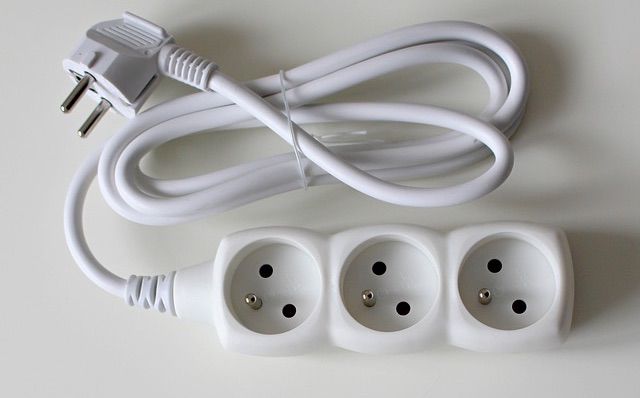 Detailed view of a Type E extension cord with a metallic earth prong in each socket.
Detailed view of a Type E extension cord with a metallic earth prong in each socket.
Some travel adapters will have a hole so the ping can get inside the adapter' plug.
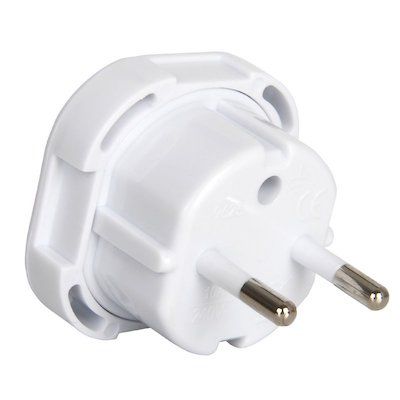 Notice the hole, It allows the pin from an outlet F to be inserted in it. This particular one has no metal connector,
therefore it does not have actual earth protection, it is literally a hole in the plug to make it physically compatible.
Notice the hole, It allows the pin from an outlet F to be inserted in it. This particular one has no metal connector,
therefore it does not have actual earth protection, it is literally a hole in the plug to make it physically compatible.
Italy
 Delicious Italian Pizza
Delicious Italian Pizza
Italy uses sockets Type L, which accepts plugs type C, E and F. In practice, you will be fine in Italy. The hole in the middle is the earth connection, you might need to know this, as your device might require it for safety.
| Plug L | Outlet L |
|---|---|
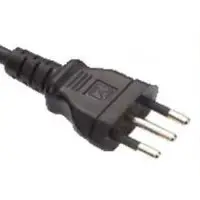 |
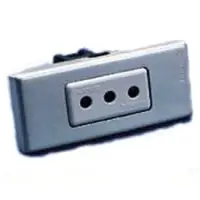 |
Sockets L accepts plugs C, E and F, at the expense of earth connection.
The Ugly
(No really, it is actually one of the safest and solids plugs around the world)
| Plug G | Outlet G |
|---|---|
 |
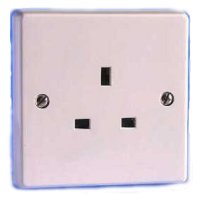 |
British plugs are of type G. They are very different to the rest of the continent (no punch intended here, just a fact).
If your trip involves visiting the United Kingdom (or the Channel Islands: Jersey, Guernsey, Sark, Herm, Jethou, Brecqhou),
you will definitely need an adapter for it. Unless, of course, you live in a country where the British plug is standard
like Singapore or Gibraltar.
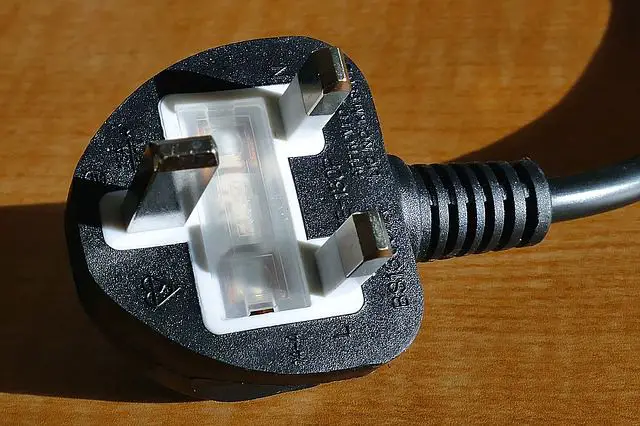 The British Night Plug Menace: plugs G tend to lay on the floor pins up; the last thing you want to do during a
night visit to the toilet is to step over one of them.
The British Night Plug Menace: plugs G tend to lay on the floor pins up; the last thing you want to do during a
night visit to the toilet is to step over one of them.
Leaving from USA? Or a country with 110V network?
You need to be aware of the voltage difference, this is an issue if your electrical devices do not 'automatically switch’ between 110V or 220V. Europe uses 220V, if you plug a 110V only device into a 220V socket, smoke, fireworks and even fire can be produced in an unintended way.
 Before connecting an American device, you need to verify the etiquette states "100-240"V (so it will be ok to plug it
into a 240V socket, like the ones in Europe).
Before connecting an American device, you need to verify the etiquette states "100-240"V (so it will be ok to plug it
into a 240V socket, like the ones in Europe).
You will need something like this:
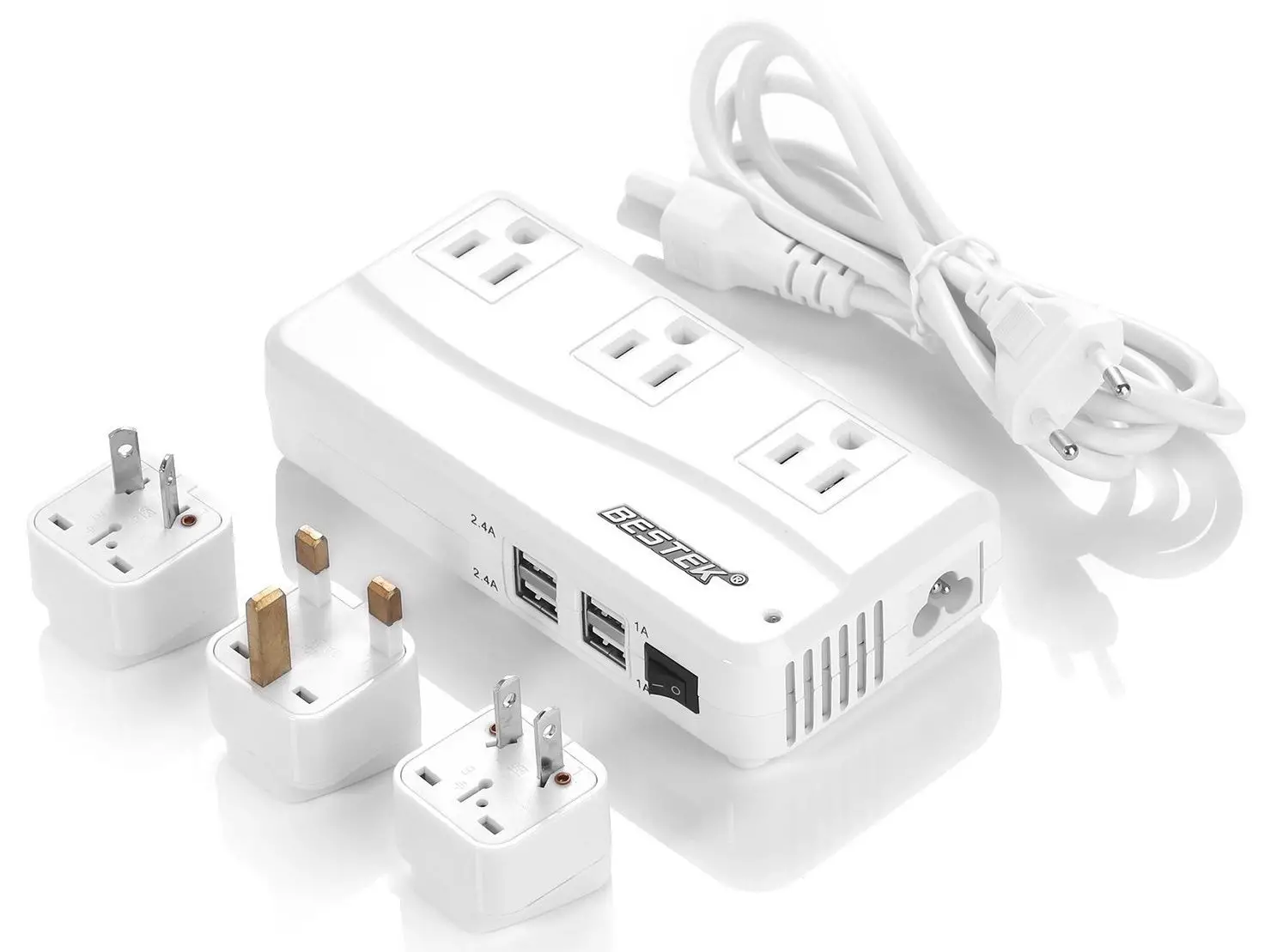 A good quality 220V to 110V adapter
A good quality 220V to 110V adapter
Please be aware that hair-dryers consume too much energy to be run by a device like this. This is designed for a laptop chargers, phone chargers or any other non-high-power appliance (as a rule of thumb, nothing that makes a lot of heat and/or moves a lot). If you need to take your own hair-dryer, you will probably be better off by buying a new one that runs on 240V at destination; a voltage reducer for such a load will be expensive and heavy.
A word of caution: Earth don't usually works
As we described earlier, most of the plugs in Europe are interoperable, at least at a basic level: you will get the electricity in your phone charger, hair dryer, etc... The interoperability stops in the earth connector: plugs E, F, G and L do have a earth connector, but all of them differ in the way the earth prongs connects between the plugs and the outlets: by using different types i.e. a Plug C in an outlet L, you will get electricity, but you don't have earth protection.
Warnings have to be given, please use extreme care when using plugs or adapters that are not fully compatible, because you will be doing it at the expense of earth protection; the earth connection can be the difference between a tickling in the fingers when grabbing failing device, versus having a fatal electrocution.
To be fair, most of the devices nowadays are double insulated and most of the electrical installations have residual-current circuit breaker, at least in Europe (don't make this assumption in developing countries.). The Residual-current circuit breaker, basically detects when your body is being used as a ‘wire' in the circuit and cuts the mains while trying to save your life in the process.
Type C does not have earthing so they are supposed to come in devices that are double insulated (basically devices that are almost impossible to get electrocuted with them.)
Thanks for reading, I hope you found the article useful; please feel free to contact us for any question (link at bottom "Contact & Suggestions").
If you found this article useful, help us by sharing it!
↬ a link from your website helps too.
